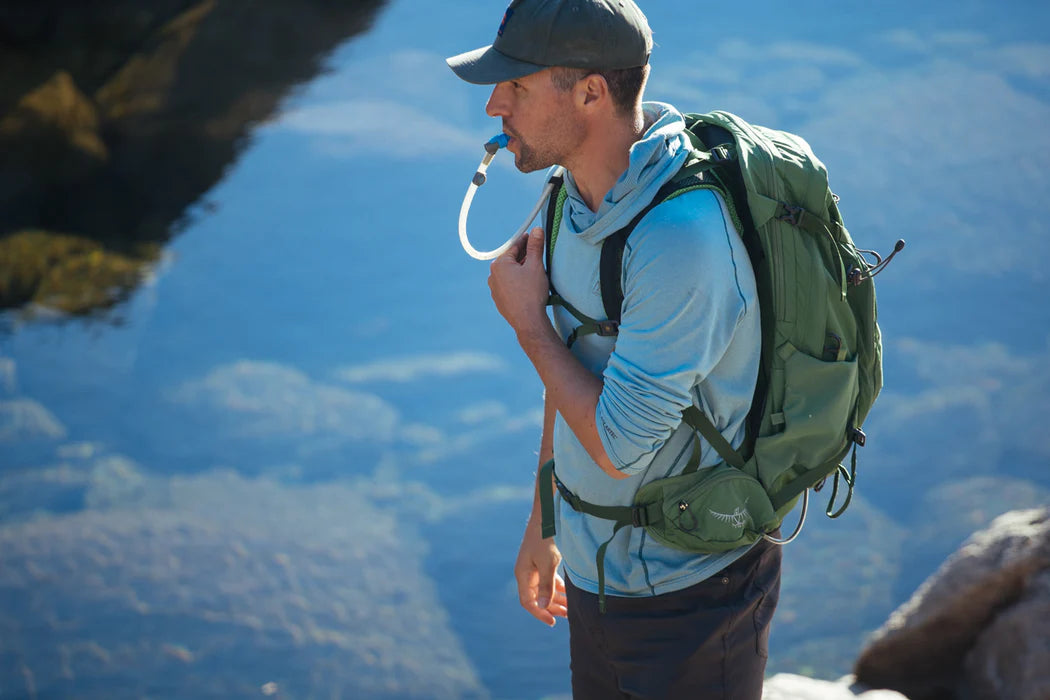From summer trail running in the desert to ski touring in sub-zero temperatures, high-output activities in hot and cold climates present additional hydration considerations when planning for your outdoor mission.

Hydration in Hot Weather
The importance of hydration in hot weather is crucial because you sweat more and your body has to work harder in order to regulate its temperature, which increases the risk of dehydration. So how do you stay hydrated in hot weather? Taking small, intermittent sips as you go—versus chugging down lots of water only when you take a break—is preferred and consuming at least 20 ounces of water per hour of activity is recommended. Additionally, without shade, the signs of dehydration can compound faster, so wearing a hat or constantly cooling your head with cold water will help your body maintain hydration levels. The more you sweat in hot weather, the faster your body loses essential minerals, like sodium. Supplementing with electrolytes—tablets or powder in your drinking water is an excellent way to do this—is highly recommended.
Also, during hot weather, know that cool liquids are absorbed into your body more quickly than warm or hot liquids. The quick absorption rate, mixed with electrolytes, should help you refuel more quickly. One final issue with warm weather running, hiking, or biking is that the water you carry may get super warm due to the sun. This typically happens in exposed water reservoirs and tubing. To keep the water cool, leave the reservoir in the backpack’s designated area and blow air into the tubing after you finish drinking from it. This will keep it much cooler than leaving the water in the exposed tube. If using a bottle, consider starting with a generous portion of ice. Pro hot weather hydration tip: you can put any HydraPak bottle or reservoir in the freezer. Fill halfway, freeze, and fill the rest with tap water before heading out.

Hydration in Cold Weather
In the cold weather, staying hydrated is also challenging, as you probably won’t feel as thirsty during cool temperatures. The likelihood of dehydration in cold weather is accelerated, thanks to drier air forcing your body to work harder to warm up. Drinking cold water is harder to be excited about when it’s also cold outside, so drink what you enjoy whether it’s warm tea, cocoa, soup, or even warm electrolyte water. Replacing liquids is the most important thing you can do to stay hydrated in cold weather.
Water freezing in reservoirs during cold weather backpacking or trail running adventures is a serious issue. To prevent this, keep the water flowing by drinking often and blowing air back down to the reservoir. This will keep the exposed tubing from freezing and should keep water warm enough. Also, make sure to start with warm water and to keep your reservoir or bottle as close to your body as possible. When backpacking, keep your reservoir at the bottom of your sleeping bag to keep it from freezing when sleeping. Additionally, you can help keep your H20 in liquid form by filling your bottle with warm water and adding in electrolyte tablets or powder—the salts will lower the liquid’s freezing point.
Don’t forget that altitude will compound the effects of heat or cold on dehydration and should be considered as well. Fortunately, a bit of planning and preparation will ensure optimal performance and adventure enjoyment during the summer or winter.

